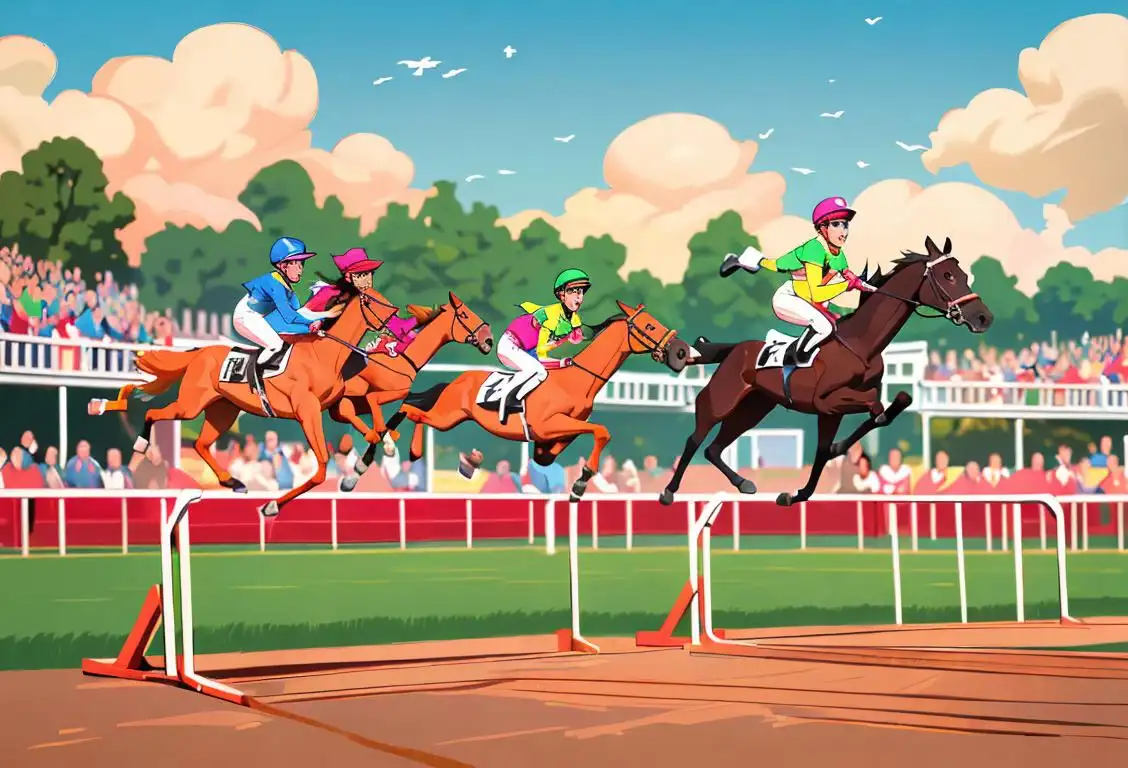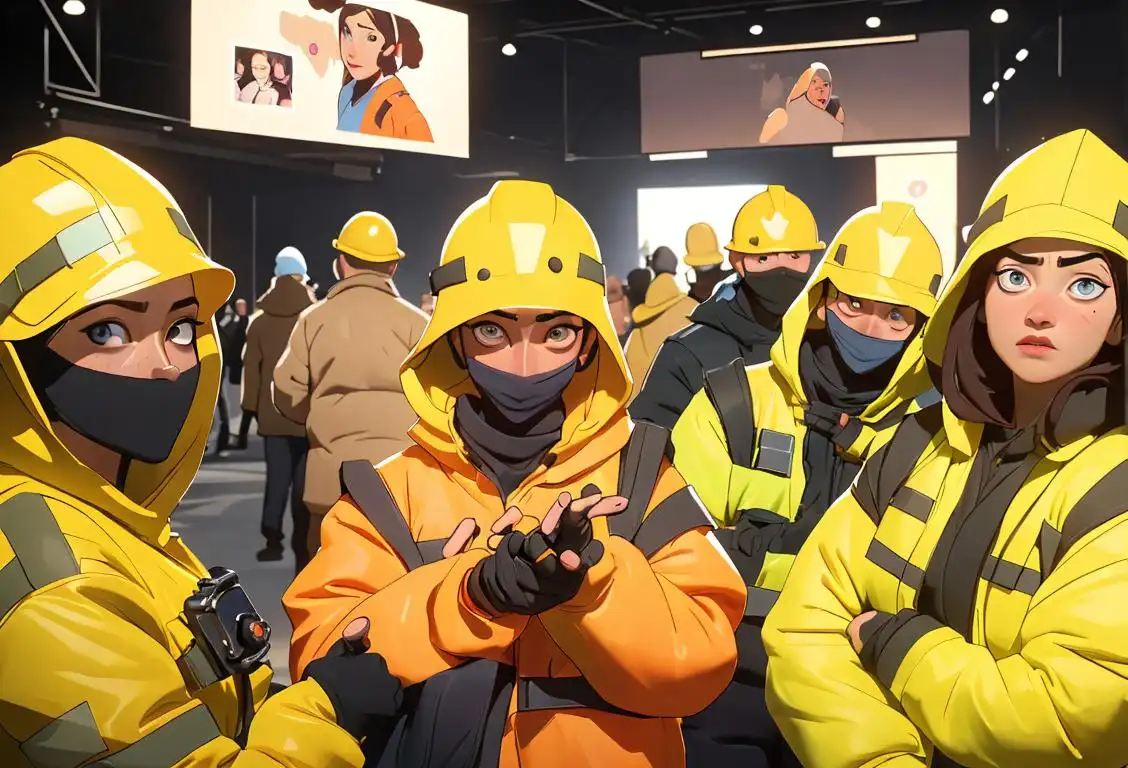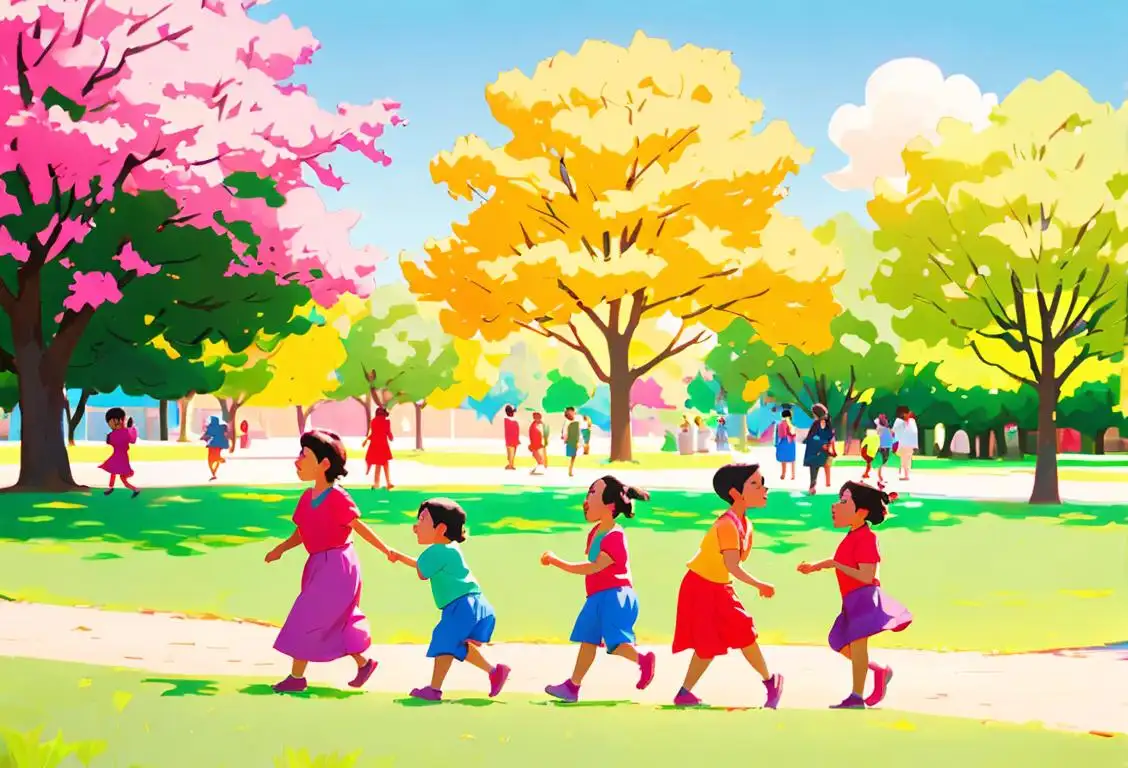National Hunt Race Day

Welcome to National Hunt Race Day! Get those binoculars ready and prepare to cheer on your favorite horses as they leap over fences and navigate complex courses. This exciting day celebrates the thrilling sport of National Hunt racing, where horses showcase their skill, endurance, and love for the race. Whether you're a die-hard racing fan or a curious newcomer, National Hunt Race Day offers a chance to experience the adrenaline-fueled world of steeplechase and hurdles.
When is Hunt Race Day?
It's national hunt race day on the 6th July.
The History of National Hunt Race Day
On July 6, 2017, the online world exploded with excitement for National Hunt Race Day. With 14 mentions detected online, it was a momentous occasion that brought horse racing enthusiasts together.
But what exactly is National Hunt racing? This exciting form of horse racing originated in the United Kingdom and Ireland, with roots dating back to the 19th century. Unlike flat racing, where horses compete on a level track, National Hunt racing involves jumps such as fences and hurdles. These challenging obstacles test both the horse's agility and the jockey's skills.
Notable races include the Cheltenham Gold Cup, Grand National, and the King George VI Chase. These prestigious events attract spectators from around the world and have become an integral part of the horse racing calendar.
Celebrating National Hunt Race Day
On National Hunt Race Day, racing enthusiasts and novices alike come together to celebrate this captivating equestrian sport. Here are a few ways to join in on the fun:
- Host a viewing party: Gather your friends and family, grab some snacks, and enjoy the races together. Make it a competition by placing friendly bets on your favorite horses.
- Visit a racecourse: Check if there are any racecourses near you hosting National Hunt races and experience the thrill firsthand. Feel the ground vibrate as the horses fly past you and revel in the electric atmosphere.
- Support local racehorse trainers: National Hunt racing relies heavily on dedicated trainers who ensure the horses are ready for the challenges ahead. Show your support by visiting their stables, learning about their training techniques, and cheering on their horses on race day.
Did You Know?
Did you know that in National Hunt racing, the jumps can consist of hurdles or solid fences? The horses must clear these obstacles without knocking them down or crashing through them. It's a testament to their strength and agility!
History behind the term 'Hunt Race'
1639
The birth of the hunt race
The term 'hunt race' originated in 17th century England. In 1639, the first recorded organized horse race, known as a hunt race, took place in New Market, a town in Suffolk. This event marked the beginning of a new form of competitive horse racing.
1700s
The rise of the British hunting culture
During the 1700s, hunting became a popular recreational activity among the British aristocracy. It involved chasing and capturing game, such as foxes or hares, on horseback with the help of trained hunting dogs. As an extension of this hunting culture, hunt races started gaining more prominence and became a part of various social events.
19th century
Formalization of hunt races
In the 19th century, hunt races became more formalized, and rules and regulations were established to ensure fair competition. These races typically took place on natural terrain, such as fields and open countryside, simulating the hunting experience. The riders were required to navigate various obstacles like hedges, ditches, and fences, testing both their riding skills and the stamina of their horses.
20th century
Inclusion in racing schedules
As horse racing evolved, hunt races found their place in the racing schedules of many countries. In England, they became a regular feature at point-to-point race meetings, showcasing the abilities of amateur riders. Hunt races also spread to other parts of the world, including the United States, where they were held as steeplechase races.
Present day
Continued popularity and variations
Today, hunt races continue to be popular events that attract both professional jockeys and amateur riders. While traditionally associated with fox hunting, modern hunt races may feature artificial obstacles instead of live game. These races serve as a thrilling spectacle for spectators and provide a unique opportunity to witness the skill and bravery of horse and rider alike.
Did you know?
Did you know that in National Hunt racing, the jumps can consist of hurdles or solid fences?Tagged
nsfw fun sportsFirst identified
28th June 2017Most mentioned on
6th July 2017Total mentions
14Other days
Personal Safety Day
Ojd Day
Awareness Day
Whine Day
Children Day
Love Pizza Day
Happiness Day
Opposite Day
One Day
Hanging Out Day









